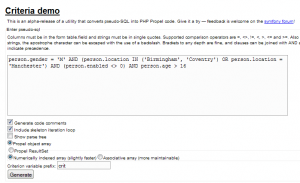Nachdem ich das offizielle Agavi DOC durchforstet habe und keine Lösung für meine Testumgebung fand, stieß ich auf diesen Link hier:
simonholywell.com/article/installing-agavi-on-xampp-windows
Herr Holywell selbst hat eine prima Einführung in die Installation von Agavi auf XAMPP und Windows geliefert.
Hier der Post im Original:
Having recently heard of the Agavi project from a web framework showdown at a PHP conference in the UK I have decided to trial it. My setup is a WinXP computer with a default install of the latest XAMPP which has thrown up some issues with installing and building Agavi. Please see my hints below to overcome these issues.
1. Open a command prompt (type cmd in the run console)
2. Navigate to your XAMMP PHP directory. Mine is C:\xampp-test\php
3. Execute pear.bat channel-discover pear.agavi.org
4. Execute pear.bat install agavi/agavi
Agavi is now installed! Now we just need a new default project to work from.
Agavi needs to be told where the phing batch file is stored.
1. Edit the agavi.bat file in the XAMPP php directory. Mine is C:\xampp-test\php\agavi.bat
2. Change set PHING_COMMAND=phing to contain the full absolute path to phing.bat which is in the XAMPP php folder. Mine looks like this: set PHING_COMMAND=C:\xampp-test\php\phing.bat
Begin setting up your project directory.
1. Create a new directory in your XAMPP directory. Mine is C:xampp-testhtdocssimonholywell.com
2. Create an empty text file called build.properties in the directory (this banishes a build error where phing fails if it cannot find the file)
3. Open a command prompt and navigate to the new directory
4. Execute agavi.bat project The agavi.bat file is stored in the XAMPP php folder. My command looked like this: C:\xampp-test\php\agavi.bat project
5. Follow the prompts the installer gives you (hitting enter will supply the installer with the [default] value)
Agavi should now be setup for your project. View it in your browser to verify.
